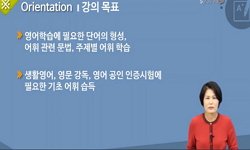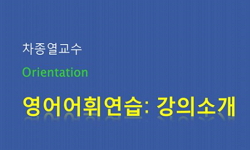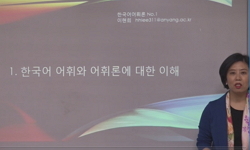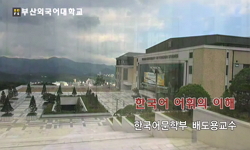배경 및 목적: 본 연구는 초등 2, 4, 6학년을 대상으로 설명담화 요약하기 능력을 설명담화의 거시구조와 미시구조로 살펴보고자 하였 다. 설명담화는 초등학교 교과서에서 빈번하게 사용되...
http://chineseinput.net/에서 pinyin(병음)방식으로 중국어를 변환할 수 있습니다.
변환된 중국어를 복사하여 사용하시면 됩니다.
- 中文 을 입력하시려면 zhongwen을 입력하시고 space를누르시면됩니다.
- 北京 을 입력하시려면 beijing을 입력하시고 space를 누르시면 됩니다.


비교/대조와 원인/결과를 중심으로 본 초등 2, 4, 6학년 일반아동의 설명담화 요약하기 능력 = Summarizing Two Expository Discourses of Compare-Contrast and Cause-Effect in Second, Fourth and Sixth Graders
한글로보기https://www.riss.kr/link?id=A106016683
- 저자
- 발행기관
- 학술지명
- 권호사항
-
발행연도
2018
-
작성언어
-
-
주제어
학령기 ; 설명담화 ; 요약하기 능력 ; 조직화 ; 응집성 ; 어휘 ; 구문복잡성 ; School-aged children ; Expository discourse ; Summarizing ; Organization ; Coherence ; Vocabulary ; Syntactic complexity
-
KDC
370
-
등재정보
KCI등재,SCOPUS,ESCI
-
자료형태
학술저널
- 발행기관 URL
-
수록면
890-901(12쪽)
-
KCI 피인용횟수
2
- DOI식별코드
- 제공처
-
0
상세조회 -
0
다운로드
부가정보
국문 초록 (Abstract)
배경 및 목적: 본 연구는 초등 2, 4, 6학년을 대상으로 설명담화 요약하기 능력을 설명담화의 거시구조와 미시구조로 살펴보고자 하였 다. 설명담화는 초등학교 교과서에서 빈번하게 사용되는 비교/대조와 원인/결과의 두 구조를 사용하였다. 방법: 초등 2, 4, 6학년 학생이 학년당 15명씩 참여하여 총 45명이 본 연구에 참여하였다. 본 연구는 비구어성지능검사에서 80점 이상, 수용표현어휘력검사에서 -1 표준편차 이상, 한국어읽기검사의 읽기유창성 검사에서 표준점수 90점 이상의 점수를 받은 학생들이 참여하였다. 학생들이 비교/대조와 원인/결과 글을 읽은 후 연구자가 제시한 도식을 채우고, 도식을 이용하여 구어로 요약하도록 요구하였다. 도식과 구어로 요약한 발화를 분석하였으며, 거시구조인 조직화, 응집성, 미시구조인 언어적 표지로서 NDW, MLC-w, MNC로 나누어 채점하였다. 각 설명담화 구조별로 일원분산분석을 사용하여 각 학년 집단 간에 차이가 있는지를 살펴보았다. 결과: 비교/대조와 원인/결과 모두 학년이 올라감에 따라 요약하기 조직성, 응집성의 총 점수, 그리고 하위 세부 지표 모두에서 유의한 증가를 보이는 것으로 나타났다. 또한 언어적 지표인 NDW, MLC-w, MNC도 학년이 올라갈수록 유의한 증진을 보였다. 특히, 응집성은 총 점수와 세부 지표 모두 모든 집단 간 유의한 차이를 보이는 것으로 나타났다. 논의 및 결론: 학년이 올라갈수록 설명담화를 요약할 때 정보를 적절하게 통합하고, 설명담화의 구조에 맞게 조직화하여 중심내용과 뒷받침하는 내용을 다양한 어휘와 복잡한 구문구조로 산출할 수 있었다. 교과과정에서 설명담화의 비중이 점차 늘어나기 때문에 학령기 언어평가와 중재에서도 설명담화 요약하기가 고려되어야 할 것이다.
다국어 초록 (Multilingual Abstract)
Objectives: The purpose of the study is to examine the ability of expository summarization for second, fourth and sixth graders. Specifically, this study focused on macrostructure and microstructure in two expository discourse types (i.e., compare-con...
Objectives: The purpose of the study is to examine the ability of expository summarization for second, fourth and sixth graders. Specifically, this study focused on macrostructure and microstructure in two expository discourse types (i.e., compare-contrast and cause-effect structure). Methods: A total of 45 students from three grade groups participated. All participants had no problems in intelligence, language, and reading. After participants read two expository discourses, they were asked to fill in the graphic organizers, and to summarize the texts verbally using graphic organizers. Analyses of oral summaries included overall organization, with coherence as macrostructure and language markers as microstructure. In order to examine differences between the three grade groups in each expository discourse, a one-way ANOVA was used. Results: There were significant differences between groups on summarizing two expository discourses, showing that organization, coherence, and language markers significantly increased as students got older. In particular, all three groups were different with each other in regards to coherence. Conclusion: The results showed that as students got older, their summarizing skills developed. That is, students have the ability to be aware of text structure, integrate the incoming information with one’s background knowledge, identify main ideas and supporting ideas, and produce sophisticated vocabularies and complex syntactic structures. Summarizing expository discourse would be one effective way to evaluate and intervene with school-aged children because it provides knowledge of macrostructure and microstructure in expository discourses.
참고문헌 (Reference)
1 이혜연, "학령기 아동의 설명담화 말하기와 쓰기 발달 - 구문, 의미, 결속장치를 중심으로 -" 한국언어치료학회 22 (22): 145-161, 2013
2 정종성, "초등학교 국어 교과서에 제시된 요약하기 학습 내용에 대한 분석" 교과교육연구소 15 (15): 165-183, 2011
3 안은주, "초등학교 2, 4, 6학년 아동의 설명담화 쓰기 비교" 한국언어청각임상학회 15 (15): 321-336, 2010
4 권유진, "이야기 만들기(story generation)과제를 통한 초등 저학년 아동의 이야기구성 능력" 한국언어치료학회 15 (15): 115-126, 2006
5 김정수, "설명하는 말하기의 단계별 지도 프로그램 연구" 부산교육대학교 교육대학원 2004
6 이미림, "설명담화 유형에 따른 초등학교 3-4학년 언어학습장애아동의 말하기 특성" 한국언어청각임상학회 19 (19): 456-466, 2014
7 김자성, "설명과 경험이야기에 나타난 학령기 아동 및 청소년의 구문발달 특성" 한국언어청각임상학회 16 (16): 540-558, 2011
8 이현정, "담화유형에 따른 학령기 단순언어장애 아동의 구문사용 특성: 대화와 설명 담화를 중심으로" 한국언어청각임상학회 13 (13): 103-122, 2008
9 Meyer, B. J., "Use of top-level structure in text : key for reading comprehension for ninth-grade students" 16 : 72-103, 1980
10 Graesser, A., "Unraveling reading comprehension: behavioral, neurobiological, and genetic components" Brookes 33-42, 2013
1 이혜연, "학령기 아동의 설명담화 말하기와 쓰기 발달 - 구문, 의미, 결속장치를 중심으로 -" 한국언어치료학회 22 (22): 145-161, 2013
2 정종성, "초등학교 국어 교과서에 제시된 요약하기 학습 내용에 대한 분석" 교과교육연구소 15 (15): 165-183, 2011
3 안은주, "초등학교 2, 4, 6학년 아동의 설명담화 쓰기 비교" 한국언어청각임상학회 15 (15): 321-336, 2010
4 권유진, "이야기 만들기(story generation)과제를 통한 초등 저학년 아동의 이야기구성 능력" 한국언어치료학회 15 (15): 115-126, 2006
5 김정수, "설명하는 말하기의 단계별 지도 프로그램 연구" 부산교육대학교 교육대학원 2004
6 이미림, "설명담화 유형에 따른 초등학교 3-4학년 언어학습장애아동의 말하기 특성" 한국언어청각임상학회 19 (19): 456-466, 2014
7 김자성, "설명과 경험이야기에 나타난 학령기 아동 및 청소년의 구문발달 특성" 한국언어청각임상학회 16 (16): 540-558, 2011
8 이현정, "담화유형에 따른 학령기 단순언어장애 아동의 구문사용 특성: 대화와 설명 담화를 중심으로" 한국언어청각임상학회 13 (13): 103-122, 2008
9 Meyer, B. J., "Use of top-level structure in text : key for reading comprehension for ninth-grade students" 16 : 72-103, 1980
10 Graesser, A., "Unraveling reading comprehension: behavioral, neurobiological, and genetic components" Brookes 33-42, 2013
11 Kintsch, W., "Theoretical models and processes of reading" International Reading Association 1270-1328, 2004
12 Wylie, J., "The interactive effects of prior knowledge and text structure on memory for cognitive psychology texts" 74 : 497-514, 2004
13 Meyer, B. J., "The interaction of reader strategies and the organization of text" 2 : 155-192, 1982
14 Yoon, S. K., "The effects of summarizing activities on the middle school students’ expository writing" Catholic University of Education 2008
15 Yang, S. J., "The development of cohesion on the narratives of Koreanspeaking children aged 4, 6, 8 and adults" Ewha Womans University 2000
16 National Reading Panel, "Teaching children to read: an evidence-based assessment of the scientific research literature on reading and its implications for reading instruction" US Department of Health and Human Services 2000
17 Westby, C. E., "Summarizing expository texts" 30 : 275-287, 2010
18 Chall, J., "Stages of reading development" McGraw-Hill 1983
19 Ghaith, G. M., "Role of text structure awareness in the recall of expository discourse" 36 : 86-96, 2003
20 Kim, Y. T., "Receptive & Expressive Vocabulary Test(REVT)" Seoul Community Rehabilitation Center 2009
21 Scott, C. M., "Measure of syntax in school-age children and adolescents" 26 : 309-319, 1995
22 Brown, A. L., "Macrorules for summarizing texts : the development of expertise" 22 : 1-14, 1983
23 Kintsch, E., "Macroprocesses and microprocesses in the development of summarization skill" 7 : 161-195, 1990
24 Nippold, M. A., "Later language development: school-aged children, adolescents, and young adults" Pro-Ed 2007
25 Owens, R., "Language development: an introduction" Allyn & Bacon 2012
26 Westby, C. E., "Language and reading disabilities" Pearson 259-324, 2005
27 Kamhi, A. G., "Language and reading disabilities" Pearson 2012
28 Pae, S. Y., "Korean Language-based Reading Assessment (KOLRA)" Hakjisa 2015
29 Jung, K. H., "Korean Haedokhae" Hakjisa 2017
30 Park, H. W., "Korean Comprehensive Test of Nonverbal Intelligence-Second Edition (K-CTONI-2)" Mindpress 2014
31 Smith, T. F., "Intermediate-grade students’ sensitivity to macrostructure intrusions" 21 : 167-180, 1989
32 Ray, M. N., "Individual differences in children’s knowledge of expository text structures : a review of literature" 4 : 67-82, 2011
33 Sudweeks, R. R., "Establishing reliable procedures for rating ELL students’ reading comprehension using oral retellings" 43 : 65-86, 2003
34 Meyer, B. J., "Effects of discourse type on recall" 21 : 121-143, 1984
35 Nippold, M. A., "Conversational versus expository discourse: a study of syntactic development in children, adolescent, and adults" 48 : 1048-1064, 2005
36 Marzano, R. J., "Classroom instruction that works: research-based strategies for increasing student achievement" Association for Supervision and Curriculum Development 2001
37 Englert, C. S., "Children’s developing awareness of text structures in expository materials" 76 : 65-74, 1984
38 Ju, N., "Characteristics of the text structure shown in expository writings by elementary school learners and teaching method" Gwangju National University of Education 2016
39 Kieras, D. E., "An approach to the formal analysis of user complexity" 22 : 365-394, 1985
40 Lundine, J. P., "Adolescent summaries of narrative and expository discourse: differences and predictors" 49 : 551-568, 2018
41 Lundine, J. P., "A tutorial on expository discourse : structure, development, and disorders in children and adolescents" 25 : 306-320, 2016
동일학술지(권/호) 다른 논문
-
- 한국언어청각임상학회
- Khalid G. Al-Shdifat
- 2018
- KCI등재,SCOPUS,ESCI
-
Differences of Early Semantic Relatedness between Late Talkers and Typically Developing Children
- 한국언어청각임상학회
- 김유미
- 2018
- KCI등재,SCOPUS,ESCI
-
- 한국언어청각임상학회
- 하승희(Seunghee Ha)
- 2018
- KCI등재,SCOPUS,ESCI
-
한국인 화자에서 새로운 버전의 Acoustic Voice Quality Index 적용
- 한국언어청각임상학회
- 김근효(Geun-Hyo Kim)
- 2018
- KCI등재,SCOPUS,ESCI
분석정보
인용정보 인용지수 설명보기
학술지 이력
| 연월일 | 이력구분 | 이력상세 | 등재구분 |
|---|---|---|---|
| 2018 | 평가예정 | 계속평가 신청대상(등재유지) | |
| 2015-01-01 | 평가 | 등재학술지 유지(등재유지) |  |
| 2013-03-29 | 학술지명변경 | 한글명 : Communication Sciences and Disorders</br>외국어명 : Communication Sciences and Disorders |  |
| 2012-12-18 | 학술지명변경 | 한글명 : 언어청각장애연구</br>외국어명 : Communication Sciences and Disorders |  |
| 2011-01-01 | 평가 | 등재학술지 유지(등재유지) |  |
| 2009-01-01 | 평가 | 등재학술지 유지(등재유지) |  |
| 2007-06-25 | 학술지명변경 | 한글명 : 언어청각장애연구</br>외국어명 : Korean Journal of Communication Disorders |  |
| 2007-01-01 | 평가 | 등재학술지 유지(등재유지) |  |
| 2006-09-13 | 학술지명변경 | 한글명 : 언어청각장애연구</br>외국어명 : Korean Journal of Communication Disorders |  |
| 2005-10-14 | 학술지명변경 | 한글명 : 언어청각장애연구</br>외국어명 : Korean Journal of Communication Disorders |  |
| 2004-01-01 | 평가 | 등재학술지 선정(등재후보2차) |  |
| 2003-01-01 | 평가 | 등재후보 1차 PASS(등재후보1차) |  |
| 2001-07-01 | 평가 | 등재후보학술지 선정(신규평가) |  |
학술지 인용정보
| 기준연도 | WOS-KCI 통합IF(2년) | KCIF(2년) | KCIF(3년) |
|---|---|---|---|
| 2016 | 1.13 | 1.13 | 1.17 |
| KCIF(4년) | KCIF(5년) | 중심성지수(3년) | 즉시성지수 |
| 1.21 | 1.18 | 1.626 | 0.33 |




 스콜라
스콜라






